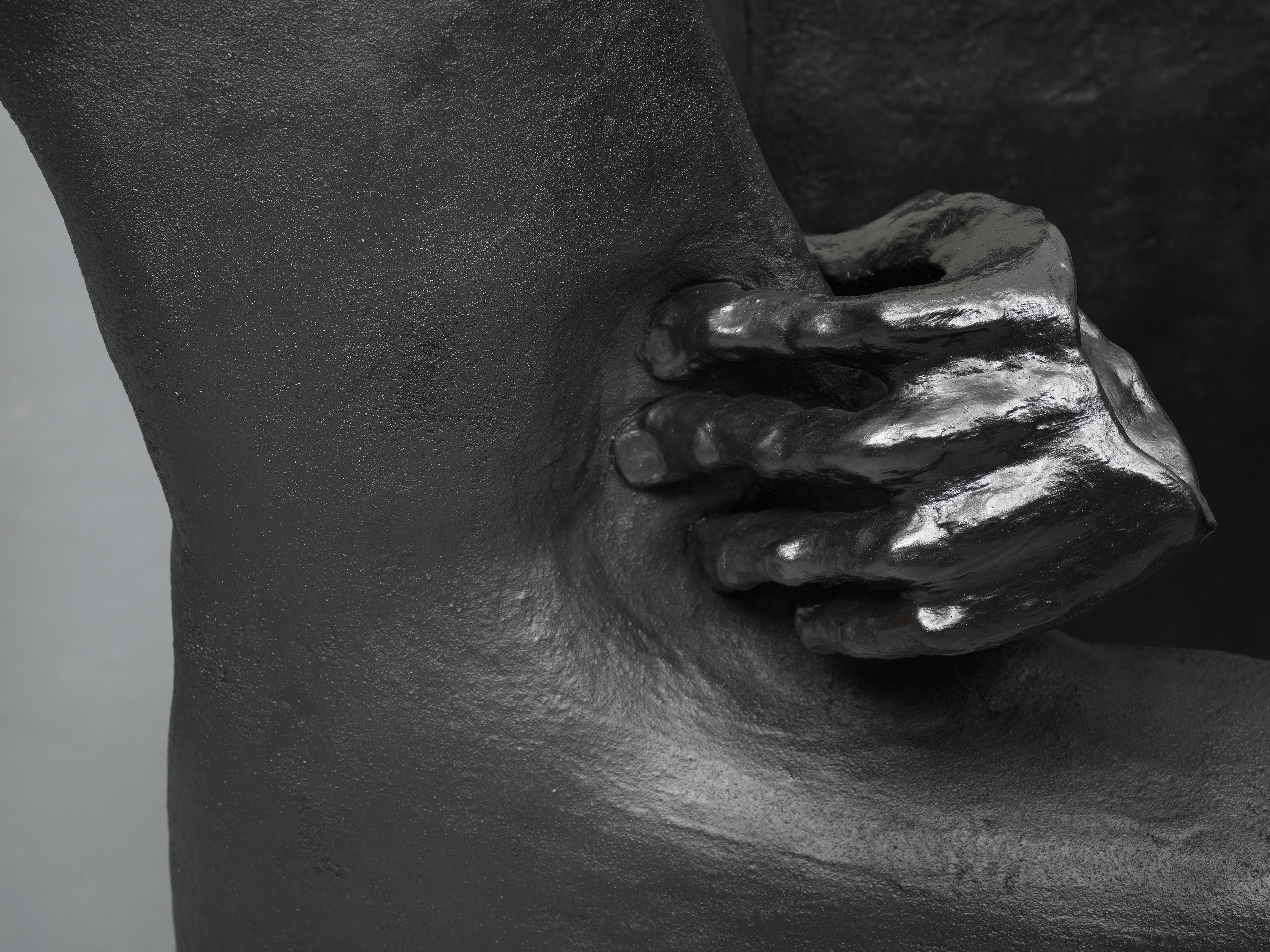For Art Basel Miami Beach, Simone Subal Gallery is excited to exhibit a site-specific booth installation by Jesse Wine that challenges the “white cube.” Floor-length colored curtains line and intersect the parameters of the booth and probe the theatricality of art viewing, opting for a more immersive experience. Incorporated in this "Baroque" display is a selection of intergenerational gallery artists: Cameron Clayborn, Baseera Khan, Kiki Kogelnik, Florian Meisenberg, Veronika Pausova, and Jesse Wine. The works on view explore the evolving nature of identity, the fragmentation of the human form, and the question of how to construct symbolic meaning.
Cameron Clayborn’s practice addresses the relationship vulnerability has to power. The work is materially rooted, and combines elements of Postminimalism, craft, performance, and spirituality. Clayborn’s drawings explore the symbolic excavation of architecture and one’s internal power. He layers different flesh-toned colored pencils, watercolors, and oil pastels to create amorphous images that recall biological masses, surgical wounds, and embroidery. Spiraling across the paper’s surface, Clayborn’s imagery evokes a constellation of suppressed energies about to break free.
Baseera Khan’s practice uses the lens of their own body to investigate how subjectivity is shaped and threatened by social and capitalist systems. Much of this inquiry revolves around the experience of being surveilled and how this coincides, in the case of Khan, with the construction of gender and their Muslim identity. Khan’s art at its core is both political and poetic, melding a diverse range of themes ranging from subgenres of indie-rock to interpretations of the Koran.
Kiki Kogelnik’s work is invested in science, technology, and the potential of the space age. Her drawings are complex meditations on pictorial surfaces, the multivalent layering of images, and societal constructions of gender. At the center of her practice is a subtle understanding of how representations shape the identity of the individual self. Yet Kogelnik’s engagement with the finitude of existence is not a pessimistic affair, but instead, through distinct visual vocabulary, is a profound celebration of life.
Florian Meisenberg sees the material and virtual as part of the same mimetic continuum that is interrupted by various kinds of screens: from the surface of a canvas to that of a computer. Meisenberg’s brush acts almost as a cursor hovering over his canvases; his cyber-landscapes are rendered out of judicious columns of paint squeezed directly from the tube and unpredictable halo-like stains left behind by the medium itself—the oil—separating from the pigment. His process provokes a nuanced understanding of how the boundaries between the mind and the world – both physical and digital – are porous and arbitrary.
Veronika Pausova’s paintings bring together constellations of everyday elements within fields of abstraction. Each object is rendered with a precise attention to detail contrasting with the artist’s experimental treatment of surfaces, processes that are sometimes referential but often enigmatic. She articulates a psychological space where iconographic fragments intermingle, like the internal action of a brain’s synapses connecting the dots. This act is often uncomfortable; a thought experiment that is as awkward as it is essential.
Jesse Wine’s practice takes on the nefarious manner in which capitalism has seeped into every aspect of existence, and captures the contemporary moment: one that is uncertain, politically fraught, and ultimately precarious. His playful, formally complex sculptures address these issues with forms haunted by a Modernist legacy. Avoiding easy material classification, the idiosyncratic surface textures of Wine’s pieces are intentionally deceptive to the eye. In these recent works, hands and feet are elongated and distorted, emerging from geometric shapes that anthropomorphize abstract structures.


